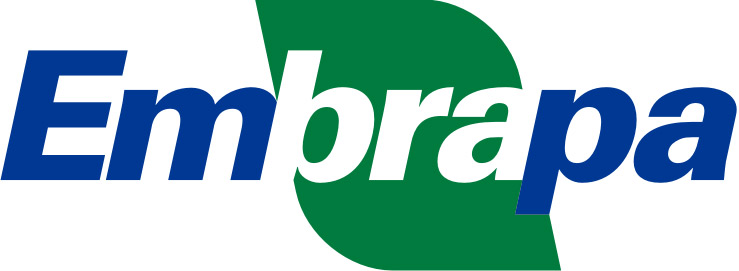Use este identificador para citar ou linkar para este item:
http://www.alice.cnptia.embrapa.br/alice/handle/doc/1103258Registro completo de metadados
| Campo DC | Valor | Idioma |
|---|---|---|
| dc.contributor.author | SA, L. A. N. de | |
| dc.contributor.author | PESSOA, M. C. P. Y. | |
| dc.contributor.author | WILCKEN, C. F. | |
| dc.contributor.author | JUNQUEIRA, L. R. | |
| dc.contributor.author | LAWSON, S. A. | |
| dc.date.accessioned | 2019-01-09T00:24:19Z | - |
| dc.date.available | 2019-01-09T00:24:19Z | - |
| dc.date.created | 2019-01-08 | |
| dc.date.issued | 2018 | |
| dc.identifier.citation | In: IUFRO Working Party 7.02.13 Meeting, Forest Health in Southern Hemisphere Commercial Plantations, 1., 2018, Punta del Este. Book of abstracts? Punta del Este: IUFRO, 2018. Ref. 33. p. 42. | |
| dc.identifier.uri | http://www.alice.cnptia.embrapa.br/alice/handle/doc/1103258 | - |
| dc.description | The quarantine laboratory ?Costa Lima? (LQCL) of Embrapa Meio Ambiente has contributed to the classical biological control of several exotic forest pests in Brazil. The first of these was the red gum lerp psyllid, Glycaspis brimblecombei, present in Brazil since 2003. Between 2004 and 2006, the parasitoid Psyllaephagus bliteus was imported from three distinct regions in Mexico, sourced from Comisión Nacional Florestal (CONAFLOR), as part of the Forest Protection Cooperative Program from Forestry Science and Research Institute (PROTEF/IPEF) of Brazil. P. bliteus populations were reared and multiplied by LQCL and later by the UNESP (São Paulo State University) which released the parasitoid in plantations. Further releases were made in 2006, resulting in effective biological control of this pest. Since 2008, PROTEF and the LQCL have successfully achieved the biological control of the bronze bug, Thaumastocoris peregrinus. In 2009 and 2010, LQCL introduced from Australia the egg parasitoid, Cleruchoides noackae, for UNESP, with the assistance of the University of Sydney and the Queensland Department of Employment, Economic Development and Innovation. This parasitoid demonstrated great multiplication and dispersion potential in eucalypt plantations throughout the country. Another Australian exotic pest that entered Brazil in 2007 was the eucalyptus gall wasp Leptocybe invasa. In 2009, Aprostocetus, Quadrastichus and Megastigmus parasitoid species were requested from the Department of Entomology, Agricultural Research Organization, Israel. However, the importation could not be completed. Introduction of another parasitoid, Selitrichodes neseri from the University of Pretoria, South Africa, was then initiated in 2015. This biological agent has also been multiplied post release from quarantine, resulting in the production of 8,615 adults in 2016/2017, which were later shipped to forestry companies associated with PROTEF for release. The biological control of this gall wasp is currently in progress, with promising results. | |
| dc.language.iso | eng | pt_BR |
| dc.rights | openAccess | pt_BR |
| dc.title | Contributions of quarantine laboratory "Costa Lima" of EMBRAPA Meio Ambiente to the classical biological control of exotic Eucalyptus pests in Brazil. | |
| dc.type | Resumo em anais e proceedings | |
| dc.date.updated | 2019-01-09T00:24:19Z | pt_BR |
| dc.subject.thesagro | Controle Biológico | |
| dc.subject.thesagro | Quarentena | |
| dc.subject.thesagro | Eucalipto | |
| dc.subject.nalthesaurus | Psyllidae | |
| dc.format.extent2 | p. 42. | |
| riaa.ainfo.id | 1103258 | |
| riaa.ainfo.lastupdate | 2019-01-08 | |
| dc.contributor.institution | LUIZ ALEXANDRE NOGUEIRA DE SA, CNPMA; MARIA CONCEICAO PERES YOUNG PESSOA, CNPMA; Carlos Frederico Wilcken, UNESP/Botucatu; Luis Renato Junqueira, FCA-UNESP Botucatu; Simon Andrew Lawson, IPEF. | |
| Aparece nas coleções: | Resumo em anais de congresso (CNPMA)  | |
Arquivos associados a este item:
| Arquivo | Descrição | Tamanho | Formato | |
|---|---|---|---|---|
| RASaLANetalFirstIUFRO...PuntaDelEste2018Ref33p42.pdf | 80,35 kB | Adobe PDF | Visualizar/Abrir |








